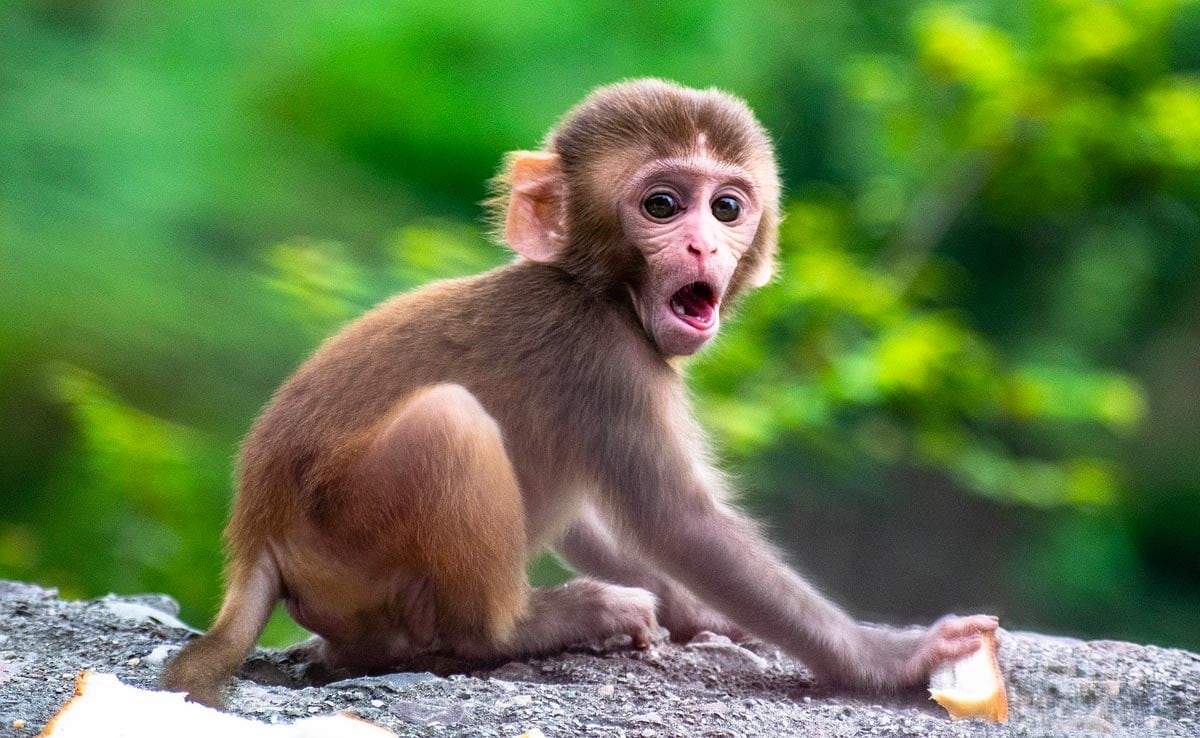Introduction to Albino-monkey.net
Albino-monkey.net are an extraordinary phenomenon within the primate world, characterized by a lack of pigmentation, resulting in white fur and pinkish features. The condition of albinism, which stems from a genetic mutation affecting melanin production, results in these unique traits that set them apart from their non-albino counterparts. These remarkable creatures not only showcase the diversity of primate biology but also highlight important genetic aspects of evolution and adaptation. The rarity of Albino-monkey.net in the wild, coupled with their striking appearance, generates substantial interest among researchers, animal enthusiasts, and conservationists alike.
From a biological perspective, albinism presents both challenges and advantages. The lack of pigmentation causes these monkeys to be more susceptible to sunburn and other dermatological issues, as well as potential vision problems due to the absence of melanin in the eyes. These vulnerabilities typically affect their survival in the wild, making the sighting of an albino monkey a rare event, often contributing to myths and fascination surrounding them. Furthermore, their bright coloration can render them highly visible to predators, thereby decreasing their chances of survival.
The website, albino-monkey.net, serves as a dedicated platform for sharing insights about these remarkable primates. The content offers in-depth information on the biology, behavior, and ecology of albino monkeys, while also addressing conservation efforts and the importance of protecting their habitats. Readers can expect to find a wealth of resources, including scientific research, personal stories from wildlife enthusiasts, and updates on conservation initiatives aimed at safeguarding these rare animals. By exploring this unique ecosystem, the platform not only enhances understanding but also nurtures an appreciation for the beauty and intricacies of albino monkeys and their role in the animal kingdom.
The Science Behind Albinism
Albinism is a genetic condition resulting from the absence of melanin, the pigment responsible for coloration in animals. In monkeys, the condition can be traced to mutations in specific genes such as the TYR gene, which is responsible for the production of the enzyme tyrosinase. This enzyme plays a critical role in the biosynthesis of melanin. When mutations in these genes occur, the synthesis of melanin is disrupted, leading to lighter skin, hair, and eyes typical of albino individuals.
In physiological terms, albino monkeys often face various challenges due to their lack of pigmentation. For instance, their light-colored skin is highly sensitive to ultraviolet (UV) radiation, increasing the risk of sunburn and skin cancer. Additionally, their reduced levels of melanin can result in vision problems, such as strabismus and nystagmus—conditions that can adversely affect their ability to navigate through their environment and evade predators.
From an ecological perspective, albinism presents several survival challenges. Albino monkeys may struggle with camouflage, exposing them to higher risks of predation compared to their normally pigmented counterparts. This disadvantage in predation risk may lead to lower reproductive success rates for albino individuals, ultimately influencing population dynamics. Various studies conducted on albinism in primates suggest that while some species can adapt to their conditions, albino individuals frequently face additional pressures that may challenge their survival.
Moreover, albinism is not unique to monkeys; it has been documented in various animal species. Understanding these genetic complexities and ecological implications not only elucidates the condition but also highlights the unique characteristics of albino monkeys. It is this distinctive aspect of their biology that has garnered significant attention on platforms like albino-monkey.net, where the exploration of these fascinating creatures is celebrated.

Cultural Depictions and Conservation Efforts
Albino-monkey.net have captured the imagination of various cultures throughout history, often being depicted in folklore, art, and literature. Their striking appearance, characterized by white fur and pink eyes, has led to both fascination and mythologization. In some cultures, albino monkeys are seen as symbols of purity or celestial beings, while in others, they can be mistaken for omens or supernatural creatures. These cultural narratives contribute to the allure surrounding albino monkeys, often embedding them as subjects in stories that explore themes of diversity, identity, and the extraordinary. The unique characteristics of these animals stimulate creativity across mediums, from ancient texts to contemporary films.
Despite their captivating portrayal, albino monkeys face significant threats in the wild. Habitat loss, primarily due to deforestation and urban expansion, poses a grave danger to their survival. Moreover, poaching and illegal wildlife trade exacerbate the challenges these animals encounter. As social awareness grows regarding the plight of Albino-monkey.net, various conservation efforts have emerged to protect them. Organizations dedicated to wildlife preservation focus on educating the public about the importance of biodiversity and the role that albino monkeys play in maintaining healthy ecosystems.
Initiatives such as habitat restoration, legal protection from poaching, and community engagement programs play a crucial role in conserving these unique primates. Collaboration between local communities, government agencies, and international organizations has yielded success stories that bring attention to the need for sustainable practices. ‘albino-monkey.net’ offers valuable insight into these conservation initiatives, showcasing ongoing projects and highlighting the challenges that still lie ahead. By emphasizing the importance of protecting albino monkeys, fostering awareness, and advocating for policy changes, we can contribute to their survival. Through continued dedication and collective action, we can ensure that future generations may also appreciate these remarkable creatures.
Conclusion: The Importance of Awareness and Advocacy
Throughout this exploration of the unique world of Albino-monkey.net, we have uncovered the remarkable traits and challenges these rare primates face in the wild. From their distinctive appearance to their vulnerabilities in natural habitats, albino monkeys represent a captivating subject that warrants our attention and concern. The emphasis on the need for awareness regarding their plight cannot be overstated, as understanding the circumstances that threaten their existence can galvanize communities and promote effective conservation efforts.
Raising awareness through platforms like albino-monkey.net serves not only to inform the public about these fascinating creatures but also to advocate for their protection. Engaging with such resources allows individuals to learn about the ecological significance of albino monkeys and the various factors contributing to their endangered status. This knowledge is paramount in fostering a sense of responsibility towards wildlife conservation.
Moreover, informed advocacy plays a crucial role in the ongoing efforts to protect Albino-monkey.net and their habitats. By supporting advocacy initiatives that focus on habitat preservation, anti-poaching measures, and educational outreach, individuals can contribute to the safeguarding of these unique animals. Encouraging responsible tourism and ethical wildlife interactions is essential in creating a sustainable future for albino monkeys.
As we conclude our deep dive into the lives of Albino-monkey.net, it is clear that continued advocacy and awareness can lead to meaningful change. By appreciating the beauty and uniqueness of these animals, alongside understanding the dire circumstances they face, we can mobilize efforts towards their conservation. The journey to ensure a thriving population of albino monkeys lies in our collective hands, and it is imperative that we take action today.




Leave a Reply